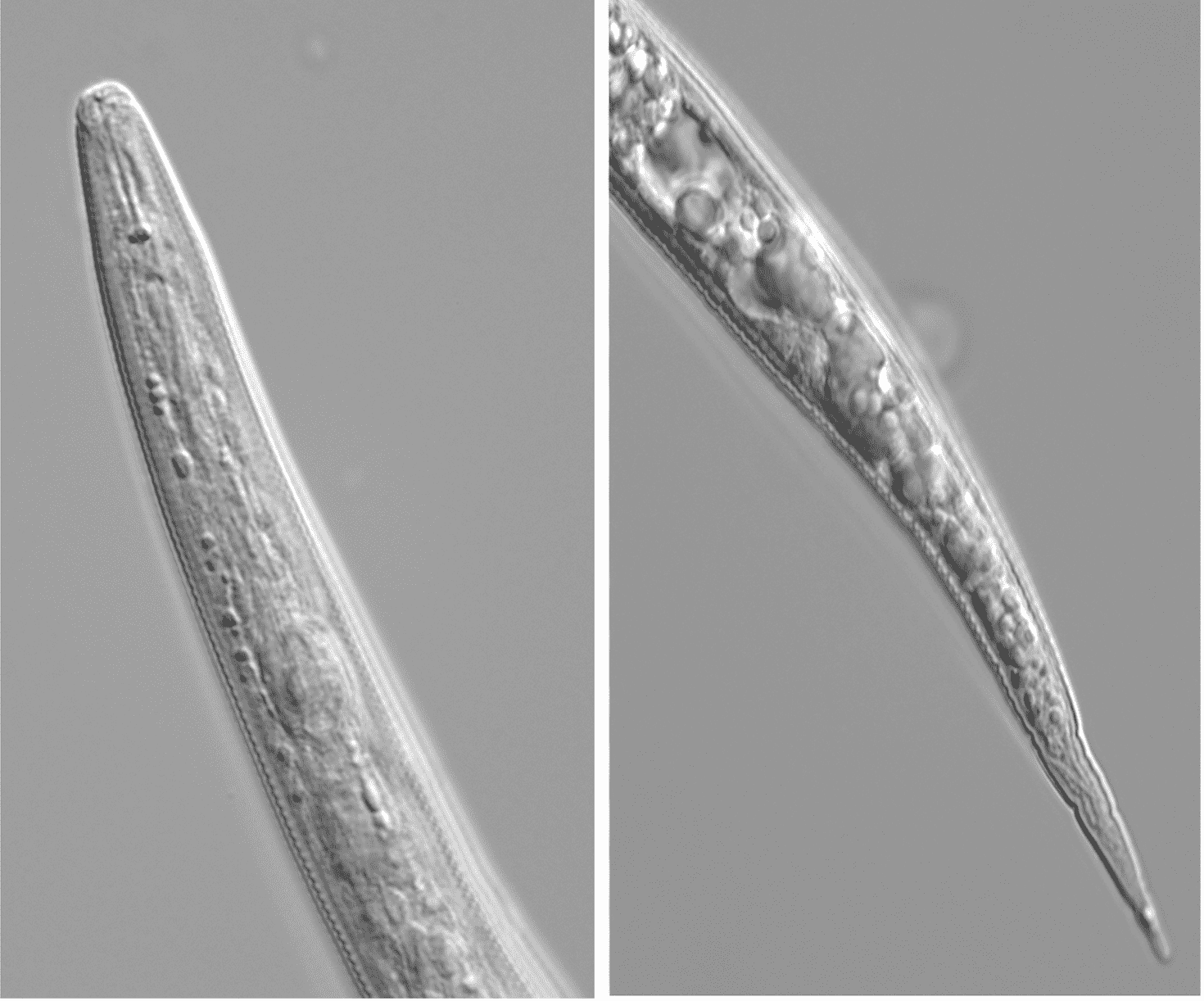Scientific classification
Kingdom:Animalia
Phylum:Nematoda
Class:Secernentea
Order:Tylenchida
Family:Heteroderidae
Genus:Meloidogyne
Species:M. arenaria
Binomial name:Meloidogyne arenaria

Introduction
Meloidogyne arenaria is a species of plant pathogenic nematodes. This nematode is also known as the peanut root knot nematode. The word "Meloidogyne" is derived from two Greek words that mean "apple-shaped" and "female". The peanut root knot nematode, M. arenaria is one of the "major" Meloidogyne species because of its worldwide economic importance. M. arenaria is a predominant nematode species in the United States attacking peanut in Alabama, Florida, Georgia, and Texas. The most damaging nematode species for peanut in the USA is M. arenaria race 1 and losses can exceed 50% in severely infested fields. Among the several Meloidogyne species that have been characterized, M. arenaria is the most variable both morphologically and cytologically. In 1949, two races of this nematode had been identified, race 1 which reproduces on peanut and race 2 which cannot do so. However, in a recent study, three races were described (races 1, 2, and 3). López-Pérez et al (2011) had also studied populations of M. arenaria race 2, which reproduces on tomato plants carrying the Mi gene and race 3, which reproduces on both resistant pepper and tomato.
Distribution
Crop damage by this nematode is mostly faced in warmer regions and it is rarely found in areas where the average monthly temperatures approach freezing. The peanut root knot nematode, race 1 is found in all areas where peanuts are grown.
Economic importance
The peanut root-knot nematode is the most serious nematode pest of the crop and questionably the most serious soil-borne disease problem. For example, the nematode is present in almost all fields where the crop is grown in Florida and economic damage is estimated to occur in greater than 50% of these fields. Individual peanut fields heavily infested with the root-knot nematode have sustained yield losses greater than 75%. In addition to causing considerable damage alone, it also increases the severity and incidence of other soil-borne diseases such as southern stem rot and Cylindrocladium blackrot. M. arenaria is C-rated pest in California.
